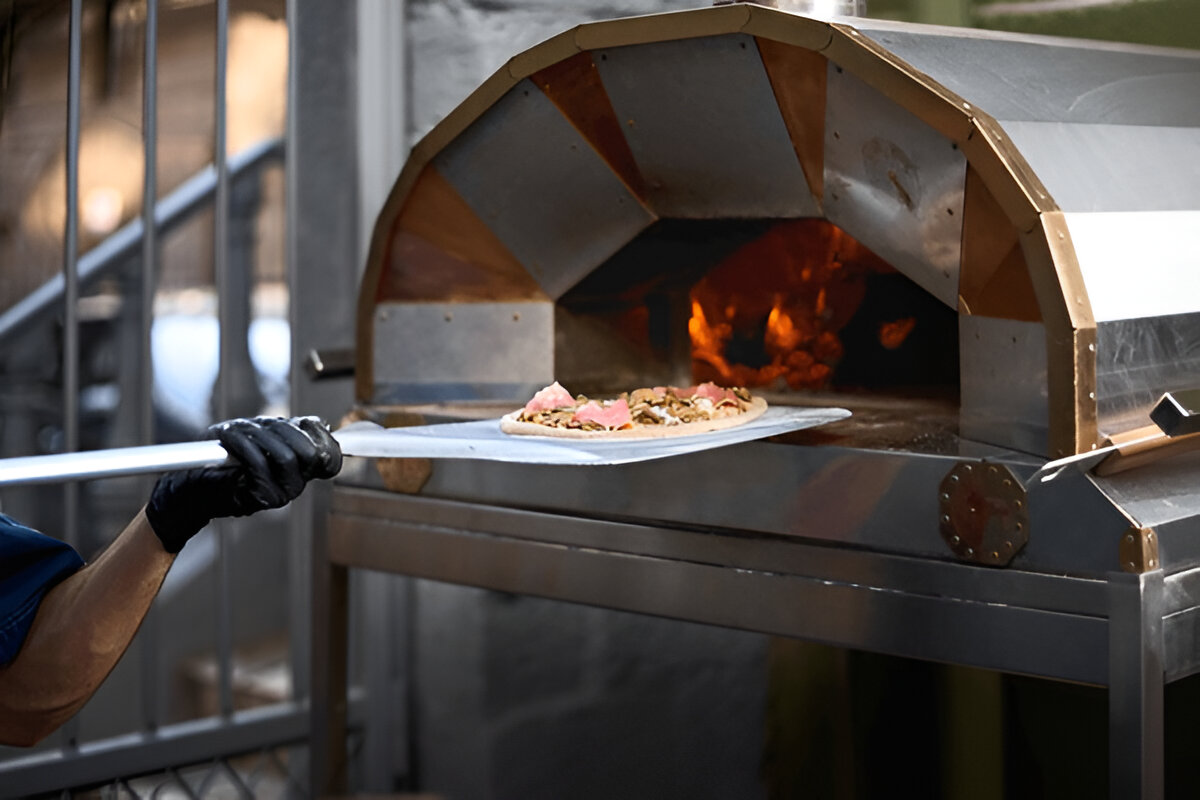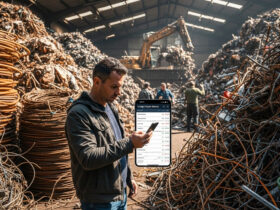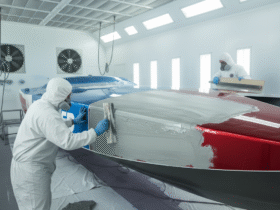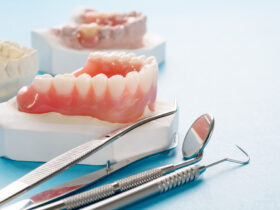Have you ever wondered if there’s a quick yet safe way to rustle up a delicious wood oven pizza recipe in your own backyard? Are you curious about how to use a wood pizza oven, but worried about common mistakes or safety hazards?
In this post, we’ll explore key tips for first-time users of rotating pizza ovens. You’ll see how these ovens differ from traditional wood-fired versions and discover the best ways to cook your pizza for mouth-watering results. Not only will we talk about set-up, preheating, and cooking techniques, but we’ll also shed light on cleaning and maintenance so you can keep your oven in tip-top shape for years to come.
Common First-Time User Mistakes to Avoid
If you’re new to the pizza oven in backyard craze, one of the biggest mistakes is rushing through the process. Lighting the fire incorrectly or forgetting to preheat the oven often causes uneven cooking. Another frequent mishap is placing the oven too close to fences or shrubs, which poses a fire risk.
Additionally, avoid using improper tools. A standard household oven mitt may not provide the right protection against extremely high temperatures. Investing in specialised gloves and a sturdy pizza peel increases both safety and success. Finally, ignoring regular temperature checks can lead to overcooked crusts or soggy centres. Keep an eye on your oven’s gauge and adjust the flame accordingly.
Setting Up Your Pizza Oven in the Backyard
Choosing the Right Spot: Backyard Safety Considerations
Picking the perfect location for your homemade pizza oven is a big deal. Look for an open area in your backyard, far from fences, low-hanging branches, and flammable objects. Proper airflow is also important, as it helps control smoke and prevents it from wafting straight into your house or your neighbours’ windows.
When positioning your oven, ensure there’s enough room for you to move around comfortably. You don’t want to be cramped between a table and a scorching oven. Keep a safe radius clear, especially if you plan to host pizza parties with a rotating oven as the centrepiece. Positioning your oven on a stable surface, like a concrete slab or a heavy-duty paver base, minimises tipping hazards.
Pre-Cooking Preparations
Gathering Essential Safety Gear
Before lighting up your oven, gather some key safety items. Heat-resistant gloves or mitts are non-negotiable, as they protect your hands from burns when handling hot tools or wood logs. A long-handled pizza peel lets you safely insert and remove pizzas without leaning in too far.
Additionally, keep a basic fire extinguisher nearby. While rotating pizza ovens are generally safe when used correctly, accidents can happen. Having an extinguisher in arm’s reach is a lifesaver if a flare-up spreads too quickly. You’ll also want a dedicated thermometer, especially if your oven doesn’t come with one built in. This helps you stay on top of those high temperatures.
Selecting Your Fuel: Wood vs. Gas
When it comes to fuel, your two main contenders are wood and gas. Wood offers that unmistakable smoky flavour and authentic aroma. Using hardwood like oak or ironbark ensures a cleaner burn, plus it helps maintain consistent heat.
Gas-fuelled ovens are convenient because you can control the temperature with a quick turn of a knob. You won’t have to wait as long for the oven to get up to speed, and you can fine-tune the heat without adding more logs. However, you lose some of the classic wood-fired smoke profile. Ultimately, your choice depends on whether you value tradition and flavour over the convenience of gas.
Preheating the Oven and Monitoring Temperature
Once you decide on your fuel source, preheating comes next. For a wood-fired setup, light smaller pieces of wood first. After they catch, gradually add larger logs. Keep the door or vent slightly open to improve airflow. You want to heat the oven until it reaches that 400–450°C sweet spot.
Either way, keep a close eye on the gauge if one is attached, or use an infrared thermometer to check the deck’s surface temperature. Consistency is the name of the game here. Let the oven stabilise for a few minutes at your target heat before you slide in your pizza.
Safe Cooking Techniques
Rotating the Pizza for Even Cooking
Instead of manually spinning your pizza with a peel, the deck does the job for you. However, staying observant is still essential. If your oven doesn’t rotate automatically, you’ll need to turn the pizza every 20–30 seconds to avoid scorching.
For an even cook, place your pizza centrally on the deck. When the edges begin to bubble and slightly char, that’s a sign you’re getting close to done. These tools come in handy for smaller adjustments, like shifting the pizza if it drifts too close to the fire source.
Judging Doneness: Avoiding Over or Undercooked Pizza
Judging doneness in a rotating oven can be tricky at first since the cooking is so fast. A well-cooked pizza typically has a lightly browned crust with a few darker spots (sometimes called leopard spotting). The cheese should be melted but not singed, and the underside of the crust should be crisp but not black.
If you’re unsure, give the crust a gentle lift with your peel or tongs. A golden-brown bottom indicates it’s ready to go. If it’s still pale or if you can see raw dough, leave it in a bit longer. On the flip side, if the crust is turning too dark too quickly, lower the temperature or pull the pizza out momentarily.
Post-Cooking and Maintenance
Cooling Down the Oven Safely
Once the cooking is finished, it’s tempting to wander off and enjoy your pizza. However, always let the oven cool down properly. Close any vents or doors to gradually lower the temperature. If your oven relies on wood, let the fire die out naturally. Removing hot coals prematurely can cause accidental burns or ash clouds.
Keep small children and pets away from the oven until it’s completely cooled. Remember, the dome and the rotating deck can retain heat for a long time. Give it at least a couple of hours to reach a safe handling temperature. Patience here is key—rushing the cooling process can crack the oven’s interior or warp any metal parts.
Cleaning and Ash Disposal Best Practices
Ash and residue are inevitable after burning wood. Wait until the oven is fully cool before you start cleaning. Use a metal ash shovel to remove the bulk of the ash, and place it in a metal container. Soak the ash in water if you’re unsure, to eliminate any possibility of smouldering embers.
After that, gently wipe down the oven floor with a damp cloth or specialised brush. Avoid using harsh chemicals, as these can seep into the porous materials of the oven and alter the taste of your next pizza. Routine cleaning not only keeps everything hygienic but also helps you spot any small cracks or flaws early, before they become bigger issues.
Regular Checks to Prolong Oven Lifespan
Proper maintenance extends your oven’s life and ensures consistent cooking results. Check for cracks around the dome or base, especially if you have a homemade pizza oven. If you’re using a rotating deck, inspect all moving parts to confirm they’re functioning smoothly with no signs of wear.
Another tip is to season your oven occasionally. Light a small fire and gradually increase the heat. This helps any moisture in the oven walls to evaporate gently, reducing stress on the structure. If your oven includes a stainless steel exterior, use a gentle cleaner approved for high-heat surfaces to keep it looking polished.
Conclusion
Summing up, using a rotating pizza oven can be a fun and rewarding way to enjoy freshly cooked meals in your own backyard. From learning how to use a wood pizza oven safely to discovering what temperature to cook pizza for a perfectly crisp crust, the journey involves both exploration and caution. By picking the right spot, gathering the proper tools, and mastering the art of steady temperature control, you’ll make every pizza night a smashing success.
The bottom line is that safety isn’t just about avoiding immediate hazards—it’s also about ensuring your investment stands the test of time. Regular checks, proper cleaning, and mindful use will keep your oven in great shape and deliver tasty, memorable pizzas for years to come.










Leave a Review